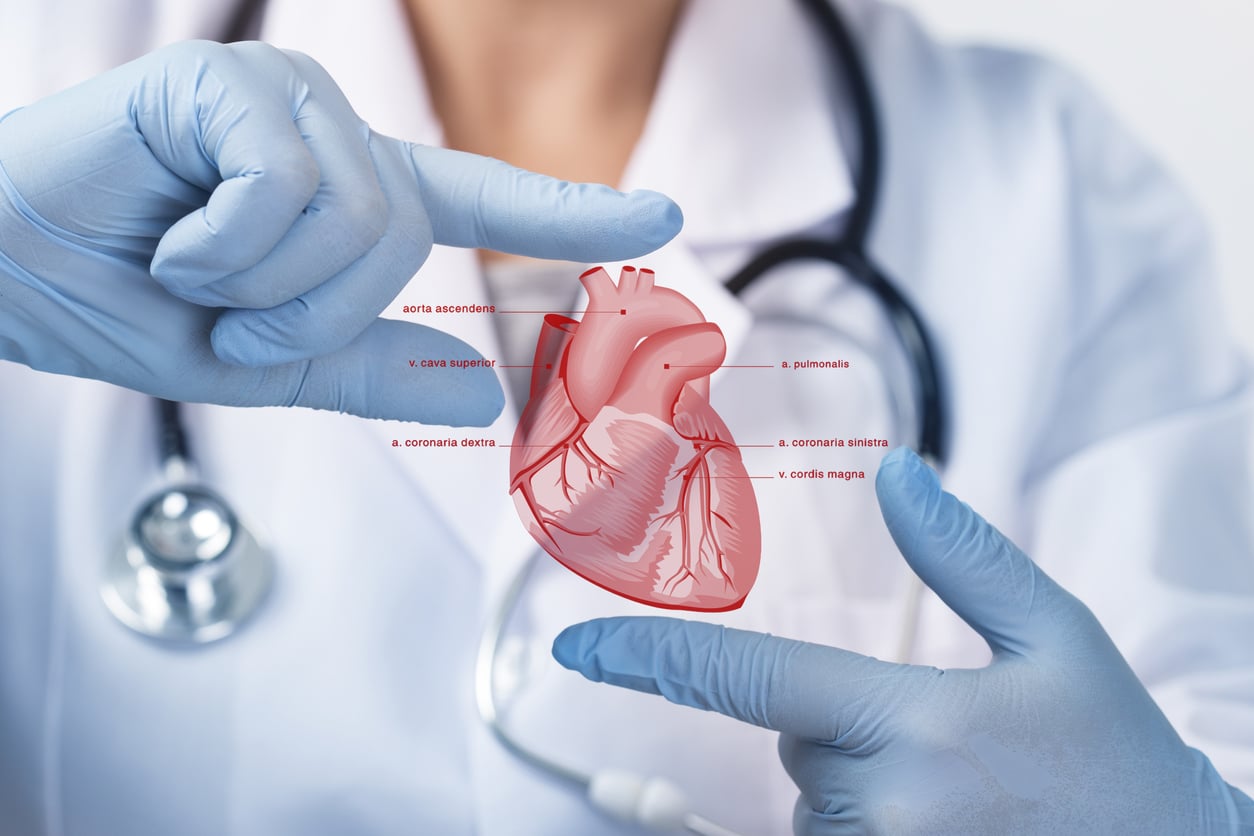Understanding hypertension with Cardiology: Symptoms, risks, and solutions
Understanding hypertension with Cardiology: Symptoms, risks, and solutions
Blog Article
Recognizing the Significance of Cardiology in Modern Healthcare Services
Cardiology plays an important duty in contemporary medical care, especially as heart disease remains to be the leading reason for death worldwide. Developments in diagnostics and treatment have actually changed individual care, making it possible for earlier treatments and improved results. In addition, the change towards preventative cardiology encourages people to handle their wellness proactively. As technology remains to evolve, the combination of innovative solutions may further redefine cardiology's effect on public health and wellness, triggering a better assessment of arising patterns and their ramifications.
The Prevalence of Heart Problem and Its Effect On Public Health
Heart disease stays the leading reason of death around the world, its influence expands far beyond specific patients to impact public wellness systems and economic climates. The high frequency of cardiovascular disease puts a substantial stress on medical care resources, necessitating increased funding for treatment, avoidance, and rehabilitation programs. Public health and wellness efforts need to deal with threat variables such as excessive weight, cigarette smoking, and sedentary lifestyles, which contribute greatly to the increasing incidence of heart conditions.Moreover, the financial burden related to heart condition is enormous, encompassing not just straight medical prices but additionally indirect expenses associated with shed efficiency and premature death. Areas encounter challenges in taking care of these costs, often causing variations in health care gain access to and outcomes. As the population ages and lifestyle-related dangers remain to intensify, the seriousness for effective cardiology treatments comes to be vital. Dealing with heart disease is not only an issue of private health yet likewise an important public health and wellness concern.
Breakthroughs in Cardiac Diagnostics and Imaging Techniques
Recent advancements in cardiac diagnostics and imaging strategies have revolutionized the area of cardiology, enhancing the ability to keep an eye on and spot heart problem. Strategies such as heart MRI, CT angiography, and echocardiography have come to be increasingly innovative, giving comprehensive photos of heart structures and functions. These methods permit for the early identification of conditions like coronary artery illness, heart failing, and valvular disorders.Moreover, innovations in non-invasive diagnostics, such as wearable technology and remote tracking devices, have actually equipped clients and healthcare carriers. These devices help with real-time tracking of heart rhythms and various other important indications, bring about timely treatments. In addition, expert system is being integrated right into imaging evaluation, improving precision and effectiveness in medical diagnosis.
Advancements in Therapy Choices for Heart Issues
Current innovations in cardiology have brought about considerable innovations in therapy alternatives for heart disease. These include advanced surgical methods that enhance procedural outcomes and arising medicines that supply brand-new methods for treatment. As the area advances, these developments play a crucial duty in boosting client treatment and outcomes.
Advanced Surgical Techniques
Developments in surgical techniques have actually changed the landscape of cardiology, offering new expect patients with heart conditions. Minimally invasive procedures, such as catheter-based treatments, have considerably decreased recovery times and hospital remains. Methods like robotic-assisted surgical treatment enhance accuracy, allowing cosmetic surgeons to browse complicated anatomical frameworks with better accuracy. Developments in imaging modern technology help with real-time visualization during treatments, enhancing results. Transcatheter aortic shutoff substitute (TAVR) exhibits a breakthrough in dealing with aortic constriction, making it possible for valve substitute without open-heart surgical treatment. Additionally, hybrid techniques that integrate catheter-based and surgical methods provide tailored options for various heart concerns. These sophisticated surgical strategies not only enhance client safety and security however likewise increase treatment alternatives, highlighting the crucial duty of advancement in modern cardiology practices.
Arising Therapies and drugs
As the landscape of cardiology remains to develop, arising therapies and medications play a critical function in boosting therapy choices for heart disease. Advancements such as novel anticoagulants and advanced lipid-lowering representatives have changed the administration of heart diseases, considerably reducing person morbidity and mortality. In addition, the advancement of genetics therapies and regenerative medication supplies appealing methods for treating problems previously considered irreparable. Professional trials are continually exposing the efficacy of these therapies, pressing the boundaries of typical treatments. Additionally, the combination of electronic health innovations promotes customized medication, permitting tailored therapy plans based on hereditary and way of living factors. Jointly, these innovations underscore the dynamic nature of cardiology, enhancing individual end results and redefining standards of care in contemporary medical care.
The Duty of Preventive Cardiology in Patient Care
Precautionary cardiology plays a necessary duty in patient treatment by concentrating on the recognition of threat factors that add to cardiovascular disease. Through way of life adjustment approaches and very early discovery strategies, medical care service providers can efficiently minimize the incidence of cardiovascular events - Cardiologist near me. This proactive approach not just boosts person end results yet also promotes lasting wellness
Danger Element Identification
While cardiovascular conditions stay a leading reason for morbidity and death worldwide, effective danger element recognition serves as a keystone of preventative cardiology. Determining danger elements such as hypertension, diabetic issues, family, and hyperlipidemia background is crucial for early intervention. Medical care experts utilize different evaluating techniques to review these aspects, enabling customized safety nets. Furthermore, understanding a patient's way of living choices, such as smoking cigarettes and physical inactivity, further notifies threat evaluations. This complete examination makes it possible for clinicians to create customized treatment plans intended at mitigating threats. By focusing on risk aspect recognition, health care systems can improve patient results and lower the overall concern of cardiovascular conditions, ultimately adding to boosted public health methods and source allocation.
Way Of Life Alteration Strategies
A wide variety of research studies highlights the critical role of way of life adjustment approaches in decreasing heart disease threat. These strategies encompass dietary modifications, boosted physical task, smoking cigarettes cessation, and weight management. By adopting a heart-healthy diet plan rich in fruits, vegetables, whole grains, and lean proteins, individuals why not find out more can decrease cholesterol levels and blood pressure. Regular physical activity strengthens the heart and boosts overall cardiovascular health. Additionally, quitting smoking greatly reduces the risk of cardiovascular disease and enhances recovery rates for those with status quo. Weight management better adds to cardio wellness by alleviating other threat variables such as diabetic issues and high blood pressure. Applying these way of life changes not only promotes individual health however likewise serves as a cornerstone of preventative cardiology in patient care.
Very Early Discovery Techniques
Lifestyle alterations considerably contribute to reducing cardiovascular disease threats, however they are most effective when paired with very early detection strategies. Precautionary cardiology highlights the value of determining potential heart concerns before they rise right into serious problems. Techniques such as blood stress surveillance, cholesterol screening, and progressed imaging innovations like echocardiograms play crucial duties in assessing cardio health and wellness. Biomarkers and genetic screening likewise boost the precision of very early detection, enabling tailored preventative approaches. Routine heart danger analyses empower doctor to interfere proactively, potentially protecting against cardiac arrest and strokes (Cardiologist near me). By incorporating these very early detection techniques right into routine care, people can gain from timely way of living treatments and official statement targeted treatments, eventually boosting outcomes and boosting high quality of life
Integrating Modern Technology Into Cardiology Practices
As advancements in innovation proceed to improve numerous fields, the combination of cutting-edge devices and systems right into cardiology practices has ended up being crucial for enhancing client care and results. Telemedicine systems allow cardiologists to check patients remotely, improving access to care while decreasing the worry on medical care facilities. Wearable gadgets, such as smartwatches, allow continual heart price surveillance, signaling both people and physicians to potential issues in real-time. Additionally, artificial intelligence (AI) is being made use of to analyze vast amounts of cardiac information, aiding in very early diagnosis and individualized treatment plans. Advanced imaging techniques, including 3D echocardiography, boost visualization of heart frameworks, causing a lot more accurate interventions. Electronic wellness documents (EHRs) simplify person info administration, guaranteeing that cardiologists have immediate accessibility to vital data. Together, these technological developments are transforming cardiology, advertising aggressive administration and improved wellness end results for individuals with cardiovascular problems.
The Relevance of Client Education And Learning and Engagement
Person education and involvement play a critical duty in the management of cardio health. By furnishing patients with understanding about their problems, therapy options, and way of living adjustments, health care providers equip people to take an energetic function in their treatment. This proactive method can bring about improved adherence to recommended medicines, nutritional changes, and exercise programs, inevitably reducing the danger of complications.Engagement likewise cultivates a solid patient-provider relationship, motivating open interaction and trust. When individuals really feel educated and involved, they are much more likely to voice worries and ask inquiries, which can bring about better scientific end results. In addition, instructional resources, such as workshops or digital platforms, can enhance understanding and promote self-management strategies. In general, focusing on patient education and engagement is vital for improving cardiovascular health and wellness, enhancing high quality of life, and minimizing healthcare costs related to heart diseases.
Future Fads in Cardiology and Their Possible Influence

Regularly Asked Inquiries
What Way Of Life Modifications Can Lower Heart Problem Threat?
The existing concern addresses lifestyle changes that can substantially minimize cardiovascular disease risk. Cardiology. Embracing a balanced diet, participating in routine exercise, keeping a healthy weight, taking care of anxiety, and avoiding tobacco can especially enhance cardio health and wellness
Just How Can I Acknowledge Very Early Signs of Heart Troubles?
Acknowledging very early signs of heart troubles includes surveillance signs such as upper body pain, lack of breath, tiredness, and uneven heartbeat. Prompt awareness of these indicators can trigger necessary clinical evaluation and treatment for far better results.
What Are the Distinctions Between Cardiologists and Heart Surgeons?
The distinctions between cardiologists and heart cosmetic surgeons hinge on their functions; cardiologists largely take care of and diagnose heart disease via non-invasive techniques, while cardiac doctors carry out operations to correct structural heart concerns. Each plays a vital, unique duty.

Exactly how Typically Should I Obtain My Heart Health And Wellness Checked?
The regularity of heart health and wellness checks varies based upon private risk elements. Generally, grownups must go through evaluations each to 2 years, while those with status quo may require even more regular evaluations as recommended by healthcare experts.
What Role Does Genes Play in Heart Problem Risk?
Genes significantly affects heart problem risk, with domestic patterns indicating inherited problems. Particular genetics can predispose people to hypertension, cholesterol concerns, and other cardio problems, highlighting the relevance of genetic testing in assessing heart health. Heart disease remains the leading cause of fatality globally, its effect expands much beyond individual people to affect public wellness systems and economies. Public wellness initiatives need to address danger variables such as weight problems, smoking cigarettes, and sedentary way of lives, which add significantly to the climbing occurrence of heart conditions.Moreover, the economic problem linked with heart disease is enormous, incorporating not just direct clinical costs however additionally indirect expenses associated to shed performance and early mortality. Preventive cardiology plays a necessary duty in individual care by focusing on the identification of danger aspects that add to heart condition. Artificial intelligence (AI) and device discovering are improving diagnostics and person surveillance, making it possible for very early discovery of heart conditions. The distinctions in between cardiologists and heart surgeons lie in their roles; cardiologists mainly handle and detect heart problems via non-invasive approaches, while heart doctors execute medical treatments to remedy architectural heart problems.
Report this page